Gas Tank – Propane Tank with Propane – LPG Tank – LPG Gas Tank: Bulk LP Gas Tank Sizes
Our standard LPG gas tank – gas tank (LPG tank) sizes are the 45kg, 90kg or 210kg propane tank with propane (LPG gas tank).
An LPG tank – LPG gas tank (propane tank with propane) is made from welded steel and is designed for the the required pressures and heat expansion of the stored hydrocarbon gases, including propane and butane.
An LPG gas tank – LPG tank (propane tank with propane – gas tank) is frequently seen at petrol stations for Autogas storage.
LPG tanks (gas tanks) and storage vessels include everything from a small BBQ propane tank with propane to gas tank (LPG gas tank), LPG gas bottle, LP gas tank (propane tank with propane), bulk LPG tank sizes and up to giant Horton Spheres.
|
LPG Tank Sizes – Propane Tank with Propane Weight: LPG Gas Tank Capacity (tonnes) |
LPG Gas Tank Sizes: Diameter (mm) |
LPG Gas Tank Sizes: Length (mm) |
LPG Gas Tank Sizes: Capacity (L) |
| 0.5 tonne LPG Tank | 915mm | 2250mm | 980 litres |
| 1 tonne LPG Tank | 1065mm | 2690mm | 1960 litres |
| 2 tonne LPG Tank | 1220mm | 3920mm | 3920 litres |
| 2.5 tonne LPG Tank | 1220mm | 5940mm | 4900 litres |
| 3 tonne LPG Tank | 1220mm | 7960mm | 5880 litres |
LPG Tank – LPG gas tank sizes (propane tank sizes) shown are indicative. Actual LP gas tank sizes can vary.
Extremely large LP gas tank sizes (propane tank sizes) are also available.
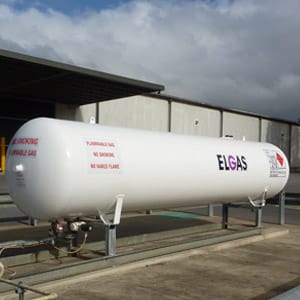
Difference Between an Industrial Propane Tank – Gas Tank and a Domestic Propane Tank with Propane
The only difference between an industrial propane tank (LPG gas tank – gas tank) and a domestic propane tank with propane (LP gas tank) is the size, based on volume of use.
There is no difference in the gas provided to industrial and domestic users.
The rate of use means that more liquid LPG needs to be vaporized and that typically means a larger propane tank with propane (LPG tank – gas tank).
A residential LP gas tank (LPG gas tank) and an industrial LPG tank (LP gas tank) are identical with the exception of the applications.
LPG Gas Tank Sizes – Propane Tank Sizes – LP Gas Tank Sizes – LPG Tank Sizes
The most common propane tank (LPG tank – gas tank) sizes are 45kg propane tank (LP gas tank – gas tank), followed by 90 kg propane tank (gas tank) and 210kg propane tank with propane (LPG gas tank) sizes.
Half tonne and one tonne propane tank (LP gas tank – gas tank) with propane sizes (LPG gas tank) would be common for large country properties and farms, as well as smaller commercial enterprises.
Our standard bulk LP gas tank sizes (gas tank) range from 0.5 tonnes all the way up to 50 tonnes and larger LPG gas tank (LPG tank – gas tank) sizes.
LPG gas tanks (gas tank) come in various bulk storage LPG tank sizes (propane tank sizes) for use in LPG tank bulk storage (gas tank).
Propane tanks (gas tanks) are used for lesser storage.
A good conversion rate to remember for LPG gas tank (LPG tank – gas tank) capacity is that 1 kilogram is approximately equal to 1.96 litre of LPG.
An LPG gas tank (LP gas tank) comes in a range of sizes.
LPG gas tank storage vessels (gas tanks) start from small to mammoth including:
● Forklift Gas Bottle – Propane Tank (LPG tank – gas tank)
● Large Gas Bottle – Propane Tank (LP gas tank)
● Large LPG Gas Tank – Bullets (gas tanks)
● Storage in Intermodal ISO LPG Gas Tank Containers
● Mounded LPG Tanks – Bullets (LP gas tank – LPG gas tank)
● LPG Tank Spheres – Horton Spheres
● Underground Propane Storage Caverns
Forklift Propane Tank – LPG Tank – Forklift Gas Tank
The gas for forklifts is stored in two different forklift propane tank (LP gas tank – LPG gas tank) sizes.
These LPG tanks (LPG gas tank) are also made from both steel and aluminium.
There is the 15kg aluminium propane tank (LPG tank – gas tank) and the 18kg steel propane tank with propane (LPG gas tank).
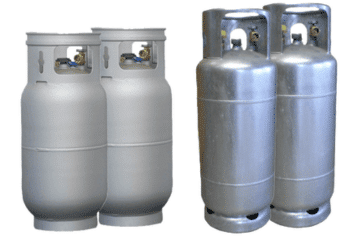
Large Propane Tank – LPG Gas Tank – Gas Tank – LPG Tank
A 45kg LPG tank (LP gas tank – LPG gas tank) – also called 45kg propane tank – are the most popular propane tank (LP gas tank) sizes for homes and small businesses.
45kg propane tank (LP gas tank) can be exchanged or refilled onsite via propane tank (LPG tank – gas tank) trucks.
A typical installation is comprised of two 45kg LPG tanks (gas tanks).
This is so you can switch LPG tank (LPG gas tank) while awaiting an exchange or refill of the empty LPG tank (LP gas tank).
There are also 90kg, 190kg and 210kg propane tank (LPG tank – gas tank) sizes, for heavier use.
These larger propane tanks (gas tanks) are always filled via propane tank (LPG tank – LPG gas tank) trucks, as they are too larger to be exchanged in a practical manner.
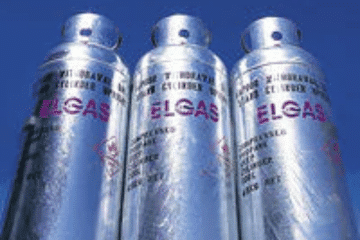
Large Propane Tank – LPG Tank – Propane Tank Bullets – Large LPG Gas Tank
There are LPG bulk storage tank sizes (LPG gas tank) for various application solutions.
These LPG gas tank types are sometimes called an “LPG Bullet”, “Propane Tank” or just “Bullet”.
The propane tank (LPG tank – LPG gas tank) is for commercial, industrial and agricultural applications.
Whilst vertical installation is possible, the vast majority of propane tank (LP gas tank) installations are horizontal.
Propane tank (LPG tank – gas tank) sizes range from ½ tonne to 40 tonnes and larger LPG gas tank.
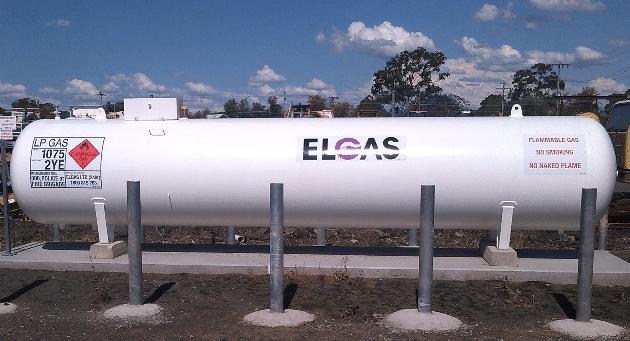
Intermodal ISO Propane Tank with Propane – Intermodal ISO LPG Gas Tank
ISO propane tank (LPG tank) containers are a propane tank with propane (LPG gas tank) mounted within a standardised framework.
The standardised framework is built to ISO (International Organisation for Standardisation) standards, just like a standard (closed steel box) shipping container.
Typical ISO propane tank (LP gas tank) sizing is 6.05m (20ft) long, 2.4m wide and 2.55m high, although other propane tank (LPG tank – LPG gas tank) sizes also exist, including 12.2m (40ft) versions.
Capacity of the 6m ISO propane tank with propane (LPG gas tank) is 24,000-25,000 litres or around 12 tonnes of propane.
A propane tank (LPG gas tank) container is built to the ISO standards to be “intermodal”, making it suitable for different modes of transportation and stackable.
These containers can be used for transport by ship, rail or truck, being transferred between them without unloading/reloading the propane tank – gas tank cargo.
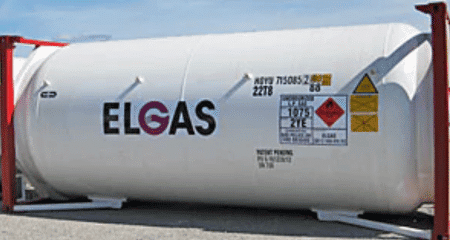
Mounded Propane Tank – LPG Gas Tank – LPG Tank – Bullet
Placing a large propane tank or bullet LPG gas tank (LPG tank – gas tank) under mounded earth provides enhanced fire safety.
The mounding provides protection from any nearby fires, vandalism and sabotage.
A bullet LPG gas tank (LP gas tank) is buried horizontally. Some of the largest propane tanks (gas tanks) can be up to 7m in diameter and 70m or more in length.
A mounded propane tank with propane (LPG gas tank) allows storage of huge quantities of propane in a single LPG gas tank (LPG tank – gas tank) location.
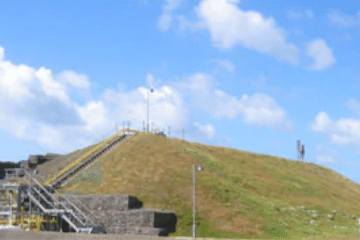
Propane Gas Storage Spheres – LPG Gas Tank Spheres – Horton Spheres
A storage sphere is a huge gas tank (LPG tank – gas tank) and a very efficient and cost effective way to store propane.
Spheres require less steel than a propane tank (LP gas tank) to hold the same quantity of propane.
Spheres are also a good shape for pressure vessels (LPG gas tank), as they distribute the stress evenly.
Horton spheres also need less land to store the same quantity of propane, versus a bullet LPG tank (LP gas tank).
In addition, they help minimise the cost of piping and foundations, as they hold more in a single pressure vessel (LPG gas tank).
The Hortonsphere® is named after Horace Ebenezer Horton, builder of the first spherical pressure vessels, back in 1923.
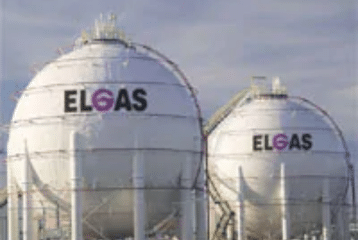
Underground Propane Gas Storage Caverns
Why would we have propane gas storage underground?
Underground storage is a cost efficient way to store very large quantities of propane.
Unlike an above ground propane tank – gas tank, there is no need for a deluge system and there is no finite life span for the project.
The above ground plant and equipment is uncomplicated, requiring minimal maintenance.
The gas is typically held within the cavern by hydrostatic water pressure in the surrounding stone.
These facilities can incorporate a dedicated docking system to load and unload propane ocean tankers.
These can be as large as VLGC class ships of up to 45,000 tonnes.
The docking system also loads smaller tankers for re-distribution to other facilities.
The picture below was taken during the construction phase of the Elgas Cavern, in Sydney.
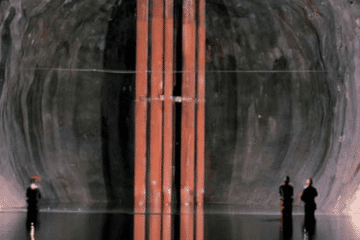
New Residential LPG customer?
New Business LPG customer?
Existing ELGAS customer?
- BBQ – Gas and Charcoal BBQ Features – Charcoal BBQ vs Gas BBQ Comparison - March 31, 2025
- GPL Gas (GPL Fuel) – GLP Gas – LPG Gasul: GLP-GPL Gas Station - March 26, 2025
- Think LPG When Building a New Home - February 26, 2025
Steve Reynolds
Technical Consultant
Steve Reynolds is a leading expert in the LPG industry with over 22 years of experience. As part of the national management team at ELGAS, Steve ensures the safe and efficient storage, handling, and transportation of LPG. He serves as the lead investigator for incidents and collaborates with authorities on industry developments.
Steve is a technical advisor to Standards Australia and Gas Energy Australia (GEA), and an active member of the World LPG Association (WLPGA), contributing to global standards and technical reviews. He holds a BSc. (Hons) in Industrial Chemistry from UNSW and has held senior safety and technical roles at ELGAS, making him a trusted authority in LPG safety and standards.
